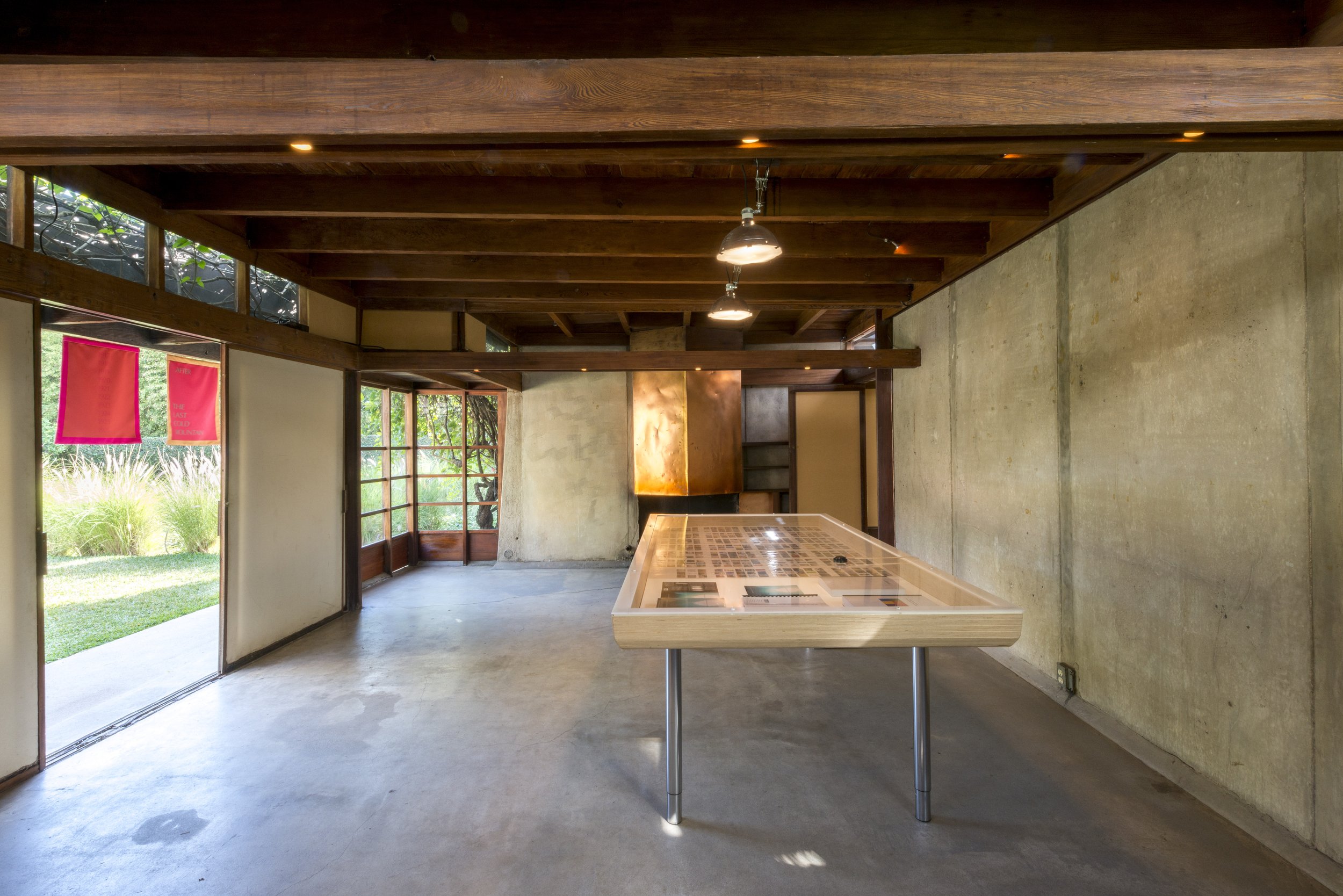Installation view of Renée Green: Begin Again, Begin Again. Photography by Joshua White, 2015.
Questions and forms of being alive, living, inhabitation, space, time and distance are entry points to Begin Again, Begin Again. The house on Kings Road was here considered as matter in space conjoined with memories. R.M. Schindler’s house became an “evocative object” and in turn, a generative node. Jumping off from psychologist Sherry Turkle’s definition of evocative objects as things we think with, yet have an emotional valence, artist Renée Green probed this notion to explore things and people we feel and think with, as well as spaces and places that generate conditions for feeling, thinking and wonder.
Stories grow and multiply out of the evocation. Objects, spaces, and places—in addition to specific times and dates—also resonated in this exhibition, suggesting an ongoing process. All elements became characters in an emerging narrative encountered through forms. During the second decade of the twentieth century Rudolph M. Schindler arrived in the US. He began searching for his form of living and inhabitation and never returned to Vienna after his arrival in 1914. During the last decade of the twentieth century the American-born Green as well continued searching for a form of living and inhabitation. For many years of that decade, she did so in Vienna. Green then returned to the US in the twenty-first century to continue the search. One was an architect, the other an artist, both with affinities for space. What did and may emerge from the coordinates Vienna and Los Angeles? Both locations provide a nexus for thinking about relations to the experience of many modernities and what exceeds them. These and other questions emerged via the combination of works and processes engaged during the exhibition.
In Begin Again, Begin Again, Green continued to play with variables of time and location, space and things, amongst reflections on relays, delays, movement, exile, migration, displacement and reinvention, all allowing for the contemplation of what arises amid particular combinations in a variety of conditions.
Resonant with her recent book Other Planes of There (Duke University Press, 2014), the exhibition featured both new productions in combination with Green’s growing repertoire of spatialized works and films. Included was Imagine This Wherever and Whoever You Are (2008), an immersive audio work; the film Climates and Paradoxes (2005), shot in Einstein’s Caputh summer house designed by Konrad Wachsmann before either of their migrations to the US; and Code: Survey (2006), a project which began as an experiment in how urban and architectural space can be animated in relation to how varieties of people may experience and feel in their passage through it; Code: Survey, commissioned by CalTrans, exists in its downtown Los Angeles headquarters within the Morphosis-designed building, yet its online dimension can be tested and engaged worldwide and provides another node for contemplation in the exhibition and its encounter in Los Angeles.
What emerged in Begin Again, Begin Again were questions and provocations about relationships to time and space—encountered inside and outside of the Schindler House—as evoked within the cosmos of this exhibition.











